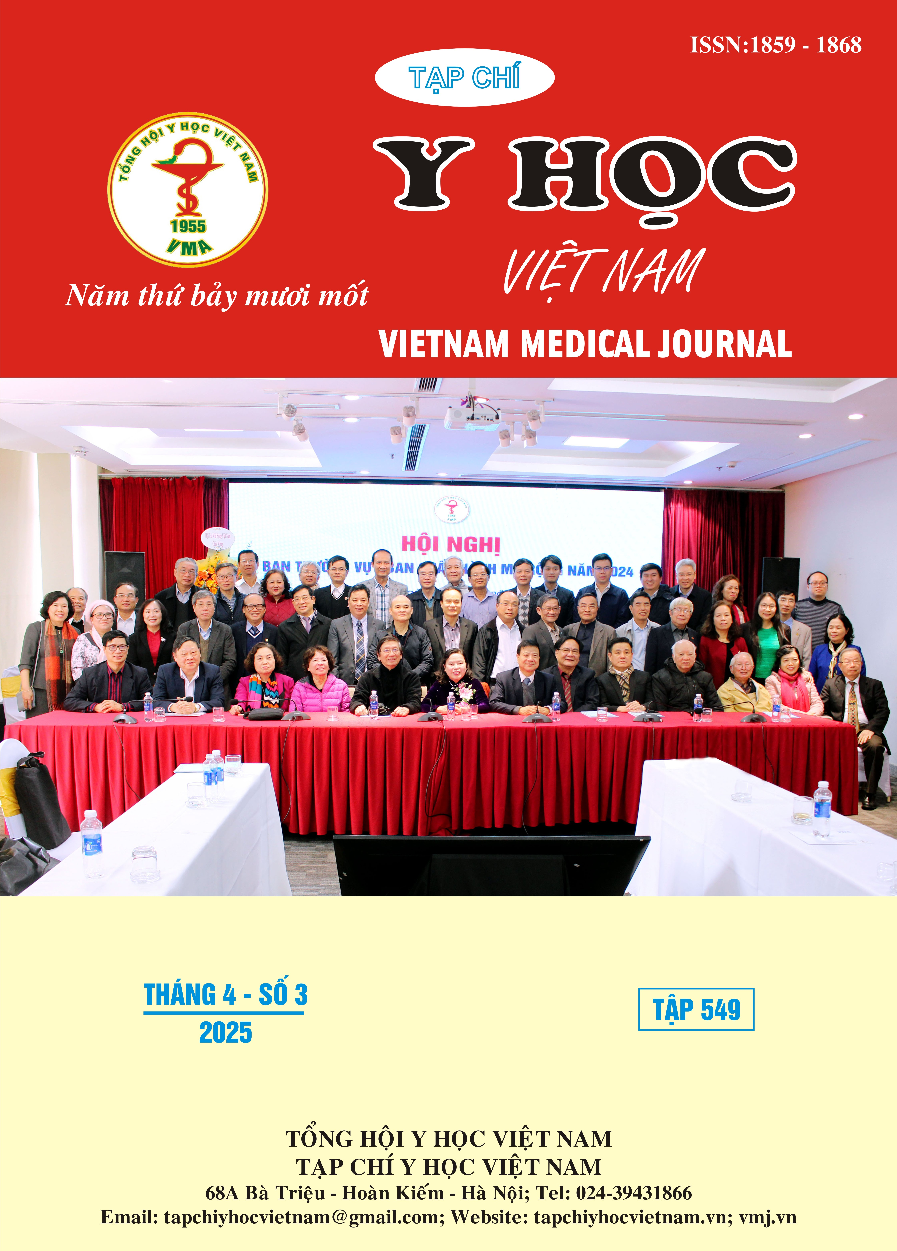ĐÁNH GIÁ HIỆU QUẢ PHƯƠNG PHÁP ÁP LỰC ÂM ĐÓNG DA THÌ ĐẦU ĐƯỜNG MỔ SAU PHẪU THUẬT CHI DƯỚI
Nội dung chính của bài viết
Tóm tắt
Đặt vấn đề: Sau khi được công nhận thành công trong điều trị nhiều loại vết thương do gãy xương hở lóc da, ghép da kích thước lớn, thiếu máu nuôi hoặc nhiễm trùng… liệu pháp áp lực âm hỗ trợ đóng vết thương tiếp tục được thử nghiệm thành công với kết quả đáng khích lệ cho các vết thương đóng kín, gần kín thì đầu nhưng có nguy cơ toác hay hoại tử mép da đường mổ. Tại Việt Nam, có nhiều báo cáo về sử dụng liệu pháp áp lực âm trên các vết thương thông thường nhưng chưa có nghiên cứu nào được thực hiện trên vết thương đã đóng kín da. Mục tiêu: Đánh giá hiệu quả phương pháp áp lực âm đóng da thì đầu đường mổ sau phẫu thuật chi dưới. Đối tượng và phương pháp nghiên cứu: phương pháp mô tả dọc tiến cứu, chúng tôi tiến hành nghiên cứu 33 bệnh nhân từ 18 tuổi trở lên được phẫu thuật điều trị gãy xương kín, gãy xương hở, vết thương phần mềm nặng chi dưới tại Bệnh viện Chợ Rẫy từ tháng 12 năm 2022 đến tháng 11 năm 2023. Kết quả: Không ghi nhận trường hợp nào có tụ máu, tụ dịch, nhiễm trùng vết mổ nông, sâu hay chảy máu bất thương. Đau sau mổ: điểm số đau sau mổ theo thang điểm NRS (Numerical Pain Rating) không ghi nhận trường hợp đau >3/10. Có 2/33 (6.1%) trường hợp có ghi nhận mép vết thương hở rộng hơn so với khi vừa tháo VAC ở các lần thay băng sau đó. Giữa các mối chỉ, khoảng hở mép da từ 5-10mm. Tình trạng này không kéo dài và đáp ứng tốt với thuốc kháng sinh, kháng viêm, chăm sóc thay băng. Cả 2 trường hợp nào đều không cần mổ lại, và tự kéo da lành sau đó. Có 1/33 (3.03%) trường hợp nổi bóng nước sau khi đặt VAC ngày 1 hậu phẫu, các bóng nước nằm rải rác dưới vùng keo dán và bên ngoài xung quanh gần vùng keo dán. Có 1/33 (3.03%) trường hợp bong tróc thượng bì sau khi tháo VAC, bệnh nhân này được mổ lại 2 lần. 29/33 trường hợp không ghi nhận bất kì biến chứng nào. Thời gian nằm viện trung bình của toàn cỡ mẫu 6.21 ± 2.13 ngày, nhỏ nhất 3 ngày, lớn nhất 12 ngày. Thời gian cho đến khi lành thương hoàn toàn trung bình của toàn cỡ mẫu 14.27 ± 2.75 ngày, nhỏ nhất 10 ngày, lớn nhất 21 ngày. Kết luận: Áp dụng phương pháp áp lực âm đóng da thì đầu đường mổ sau phẫu thuật chi dưới là kĩ thuật an toàn với biến chứng trong và sau khi phẫu thuật thấp. Tỉ lệ lành vết mổ thì đầu cao, không làm tăng chi phí điều trị nhưng làm giảm số ngày nằm viện.
Chi tiết bài viết
Từ khóa
Liệu pháp áp lực âm dành, Băng gạc tiêu chuẩn, Nhiễm trùng sau mổ, Đóng kín vết thương, Chấn thương chi, Đóng vết thương kì đầu, Đường mổ phẫu thuật chi dưới
Tài liệu tham khảo
2. Cowan KN, Teague L, Sue SC, Mahoney JL. Vacuum-assisted wound closure of deep sternal infections in high-risk patients after cardiac surgery. Ann Thorac Surg. 2005;80(6):2205-2212. doi:10.1016/j.athoracsur.2005.04.005
3. Scherer LA, Shiver S, Chang M, Meredith JW, Owings JT. The vacuum assisted closure device: a method of securing skin grafts and improving graft survival. Arch Surg Chic Ill 1960. 2002;137(8):930-933; discussion 933-934. doi:10. 1001/archsurg.137.8.930
4. Stannard JP, Gabriel A, Lehner B. Use of negative pressure wound therapy over clean, closed surgical incisions. Int Wound J. 2012;9 Suppl 1(Suppl 1):32-39. doi:10.1111/j.1742-481X.2012.01017.
5. Suzuki T, Minehara A, Matsuura T, Kawamura T, Soma K. Negative-pressure wound therapy over surgically closed wounds in open fractures. J Orthop Surg Hong Kong. 2014;22(1): 30-34. doi:10.1177/ 230949901402200109
6. Lin KC, Li YS, Tarng YW. Safety and Efficacy of Prophylactic Closed Incision Negative Pressure Therapy after Acute Fracture Surgery. Injury. 2020;51(8): 1805-1811. doi:10.1016/j.injury. 2020.05.032
7. West J, Wetherhold J, Schulz S, Valerio I. A Novel Use of Next-Generation Closed Incision Negative Pressure Wound Therapy After Major Limb Amputation and Amputation Revision. Cureus. 2020 Sep 11;12(9):e10393. doi: 10.7759/cureus.10393.
8. Zayan NE, West JM, Schulz SA, Jordan SW, Valerio IL. Incisional Negative Pressure Wound Therapy: An Effective Tool for Major Limb Amputation and Amputation Revision Site Closure. Adv Wound Care (New Rochelle). 2019 Aug 1;8(8):368-373. doi: 10.1089/wound.2018.0935.


